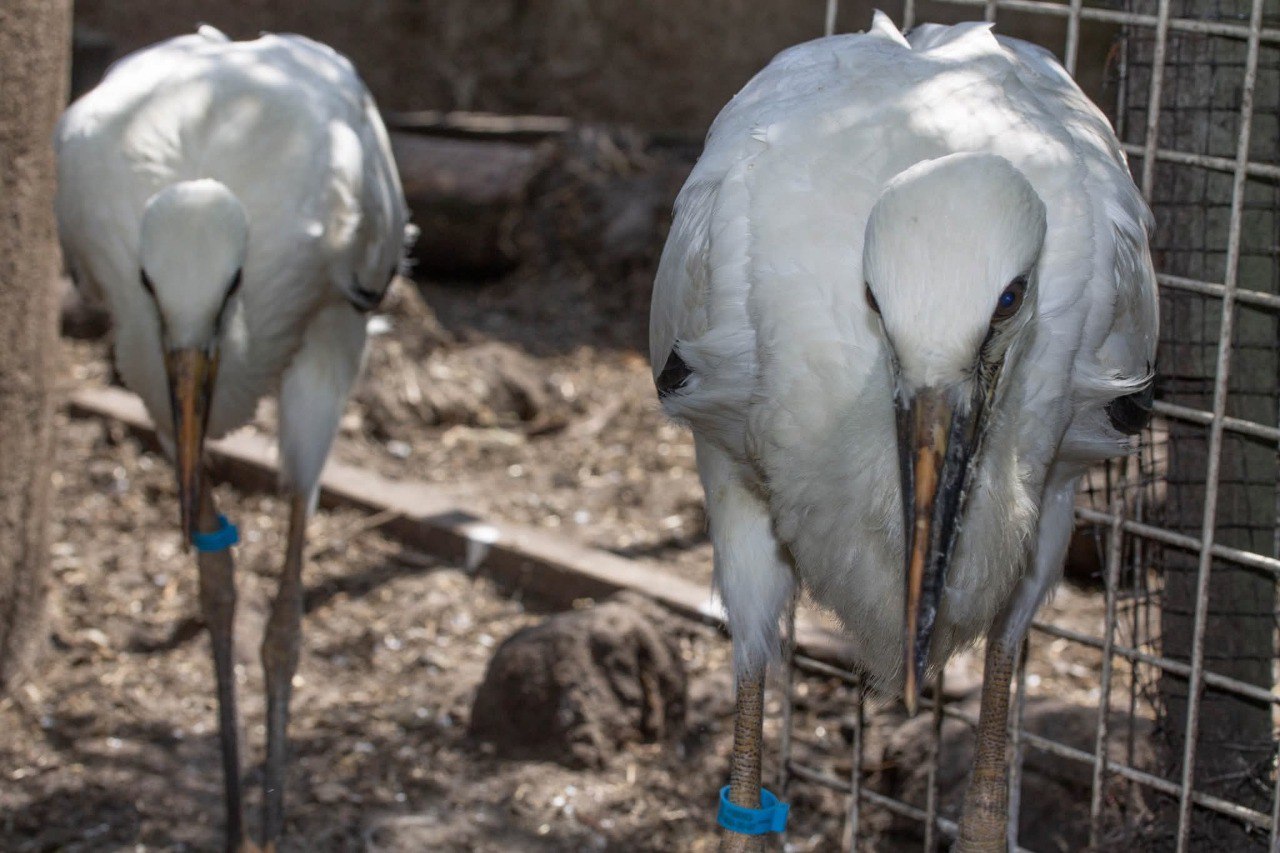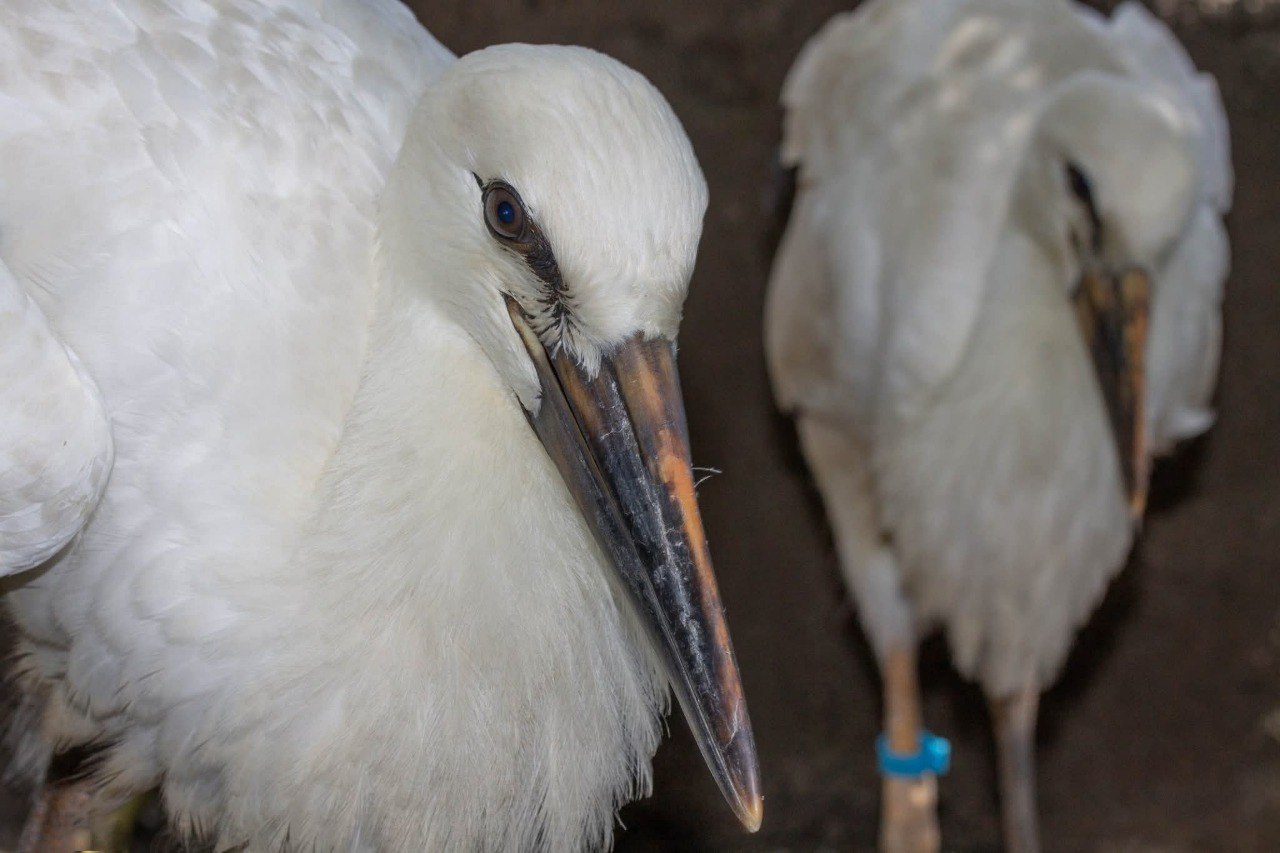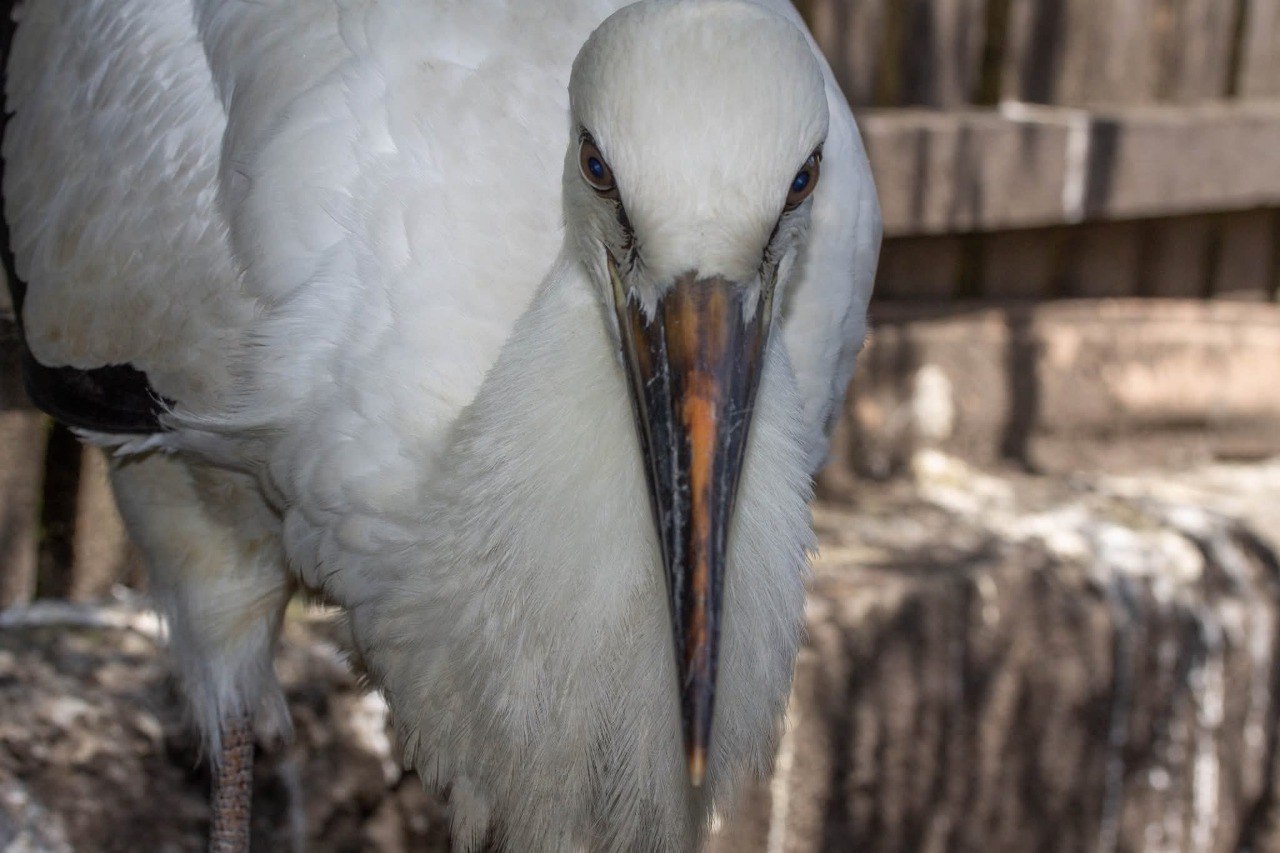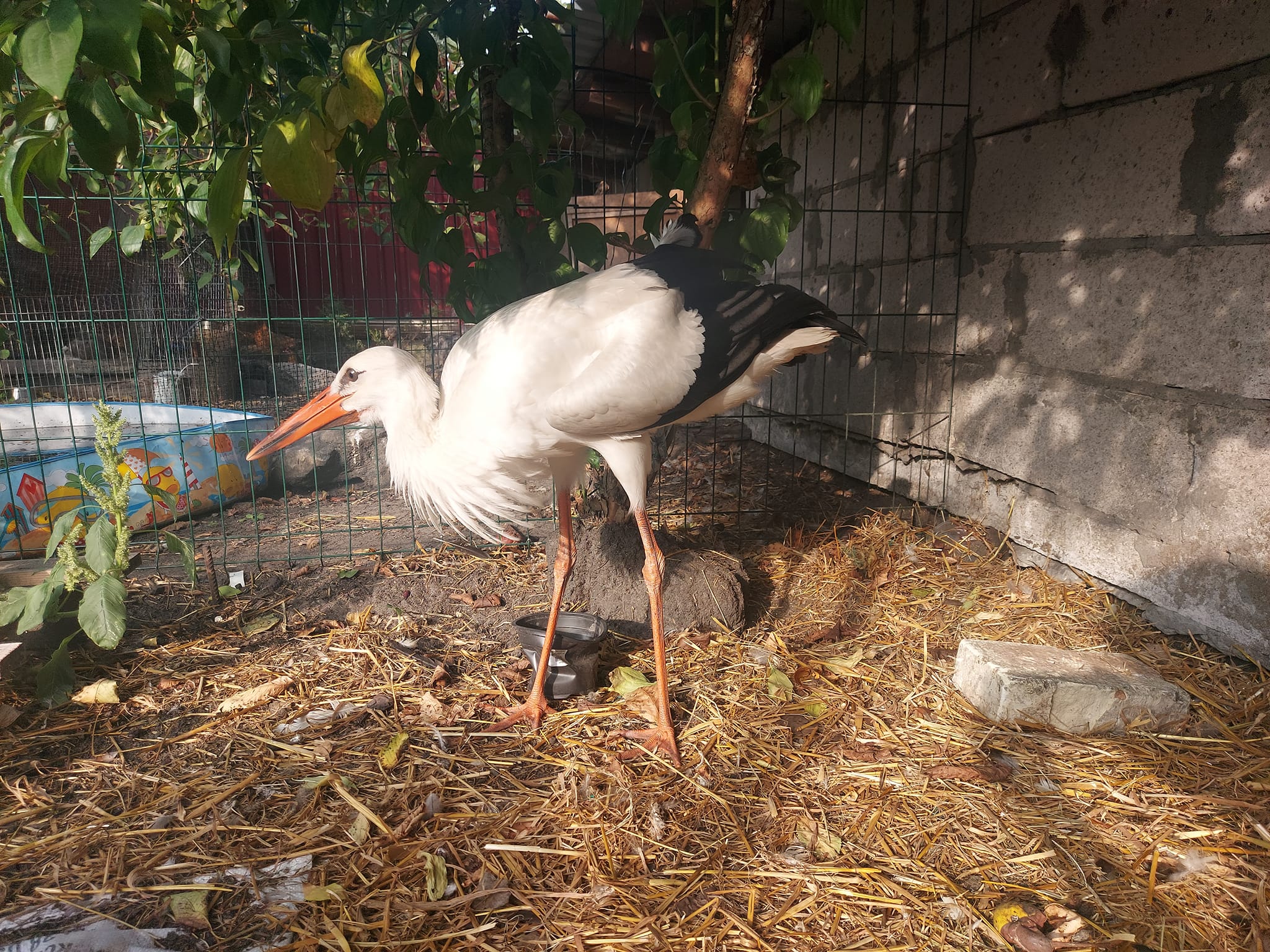
It's already August. The chicks grew up and became the size of an adult bird. Most of them are already flying. However, there are still signs that allow us to determine who is in front of us: an adult bird or a chick of this year.
It's very simple. An adult stork has an orange beak and legs.
As for the chicks, their beaks and legs remain black for a long time. You can see it in the pictures.



However, when the chicke matures a little more, this sign ceases to be so obvious. In the last photo you can also see a chick, but it is a little more than the ones in the photo above. At the same time, dark stripes are clearly visible on the key.

Appearance is not the only difference. Of course, young birds are also slightly smaller than adults. However, this can only be seen by direct comparison.
The behaviour of young storrors is also different. They are a little more trusting. Their flight is often not so confident. However, this is not always the case and there may be differences in different birds.
The greatest danger to the stork is electrical injury, when the bird accidentally flies into high-voltage wires, poisoning with mice (in case farmers scatter poison for rodents in the field) or getting under the elements of agricultural machinery that harvests. The latter happens because the technique also scares rodents, which become easier prey. In the excitement of hunting, the bird becomes less attentive and can get injured.
In case of injury or poisoning, the bird should be taken to the veterinary clinic immediately. Nevertheless, remember that even an injured stork will fight for his life (it does not understand that you want to help) and can severely traumatise you. Cover the bird with a jacket or other cloth and firmly press the wings. With the other hand, be sure to hold the beak!!!